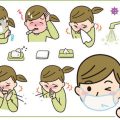Understanding Your Insurance Coverage
When it comes to acne treatments in the United States, understanding your health insurance coverage is crucial before scheduling a dermatology appointment. Most U.S. health insurance plans—whether through an employer, the Health Insurance Marketplace, or Medicaid—categorize dermatology visits as specialty care. This often means youll face higher copays than you would for a primary care visit, with typical copays ranging from $30 to $75 per visit depending on your plan and whether the dermatologist is in-network.
Beyond copays, deductibles play a big role. A deductible is the amount you pay out-of-pocket each year before your insurance starts covering costs. For many plans, routine dermatology visits may count toward your deductible, especially if your plan has a high-deductible structure. Once youve met this threshold, your insurer generally covers a larger percentage of subsequent visits and treatments.
Insurance companies also differentiate between cosmetic and medically necessary treatments. Medically necessary treatments—such as those for moderate to severe acne that causes physical discomfort or scarring—are more likely to be covered. On the other hand, procedures viewed as purely cosmetic (like certain chemical peels or laser therapies) are usually excluded from coverage.
It’s important to review your specific policy details before booking an appointment. Look for information on specialist referrals, required pre-authorizations, and what documentation you might need from your dermatologist to support claims that your acne treatment is medically necessary. Knowing these basics will help you avoid surprise bills and ensure you maximize your benefits when navigating acne treatments with insurance and dermatologists in the U.S.
2. Finding the Right Dermatologist
When managing acne treatments in the U.S., finding a dermatologist who fits your needs and works with your insurance is crucial. Here’s how to streamline your search and ensure you’re getting quality care without unnecessary out-of-pocket costs.
Using Insurance Provider Directories Effectively
Start by logging into your insurance provider’s online portal or calling customer service for an up-to-date directory of in-network dermatologists. Most major insurance companies, such as Blue Cross Blue Shield, UnitedHealthcare, Aetna, and Cigna, offer searchable directories where you can filter by specialty, location, language spoken, and even gender preferences. Always double-check the dermatologist’s participation status by calling their office directly before booking an appointment—directories can sometimes be outdated.
Sample Steps to Use a Provider Directory
| Step | Action |
|---|---|
| 1 | Access your insurance provider’s website or app |
| 2 | Select “Find a Doctor” or similar option |
| 3 | Filter by “Dermatology” and enter your zip code |
| 4 | Narrow results using additional filters (gender, language, etc.) |
| 5 | Call the dermatologist’s office to confirm network status and availability |
Checking Network Participation & Avoiding Surprise Bills
The U.S. healthcare system relies heavily on networks: seeing an out-of-network provider can mean much higher costs. Ask the following questions when confirming network participation:
- Are you currently accepting new patients with my insurance?
- Is this specific location/facility also in-network?
- Will all procedures (e.g., extractions, light therapy) be billed as in-network?
This proactive approach helps avoid surprise billing and ensures coverage for most acne treatment options.
What Credentials & Focus Areas Matter?
An American board-certified dermatologist will hold “MD” (Doctor of Medicine) or “DO” (Doctor of Osteopathic Medicine) degrees and be certified by the American Board of Dermatology. When it comes to acne, look for providers who:
- Mention acne treatment as a focus area on their website or profile.
- Participate in clinical trials or research related to acne.
- Have positive patient reviews specifically mentioning acne care results.
- Mention experience with advanced therapies (e.g., isotretinoin/Accutane management).
Quick Reference: What to Look For in a U.S. Dermatologist
| Criterium | Why It Matters |
|---|---|
| Board Certification (ABD) | Assures specialized training and standards are met in dermatology. |
| Insurance Network Participation | Keeps your costs manageable; ensures coverage for treatments. |
| Acne Treatment Focus/Expertise | Experience with various therapies increases chances of effective outcomes. |
| Patient Reviews & Ratings | User feedback highlights real-world bedside manner and effectiveness. |
| Location & Availability | Easier access means better consistency in follow-up care. |
By leveraging these practical strategies, you’ll maximize your insurance benefits while selecting a qualified dermatologist equipped to handle both common and severe acne cases within the complexities of the U.S. healthcare landscape.
![]()
3. Preparing for Your Dermatology Appointment
Getting the most out of your dermatology appointment in the U.S. requires a bit of preparation, especially when dealing with acne treatments and insurance coverage. Here’s how you can set yourself up for success.
What to Bring
Always bring your current insurance card to ensure your visit is properly billed, as coverage may differ based on your provider or plan. Prepare an updated list of all medications and topical treatments you’re currently using, including over-the-counter products and supplements. Having this information helps your dermatologist avoid prescribing conflicting treatments. Additionally, consider bringing clear photos documenting your acne’s progression, especially if it fluctuates or is less visible on the day of your appointment—this visual evidence can be valuable when discussing treatment options or insurance authorization.
Questions to Ask Your Dermatologist
Arriving with prepared questions demonstrates that you’re proactive about your care and helps you fully understand your treatment options. Key questions include: What are the potential side effects and expected outcomes of each recommended treatment? Are there generic or alternative medications that are just as effective but more likely to be covered by insurance? How long should I try a new treatment before expecting results? Are there lifestyle changes that can complement my prescribed regimen?
How to Advocate for Insurance-Covered Treatments
Navigating insurance coverage in the U.S. healthcare system can be complex. Don’t hesitate to ask your dermatologist whether they have experience working with your specific insurer and if they can help submit prior authorizations for certain medications or procedures. Clarify which acne treatments are typically covered under your plan and request documentation if needed for appeals or additional approvals. If a suggested medication isn’t covered, ask about alternatives or supporting evidence that could help justify the necessity to your insurer. By coming prepared and asking informed questions, you increase the likelihood of receiving effective, affordable care tailored to your needs.
4. Common Acne Treatments and Insurance Considerations
When navigating acne treatment options in the U.S., it’s essential to understand the types of therapies available and how insurance typically handles their costs. Treatments range from prescription topicals and oral medications to procedures performed by dermatologists. Coverage can vary widely depending on your insurance plan, with some treatments falling under medical necessity and others considered cosmetic.
Prescription Topical Medications
Topical treatments are often the first line of defense against acne and include retinoids, antibiotics, and combination creams. Most U.S. insurance plans are likely to cover FDA-approved prescription topicals if your dermatologist deems them medically necessary for treating moderate to severe acne. However, brand-name versions or newly approved formulations may require prior authorization or have higher copays.
Oral Medications
For persistent or cystic acne, dermatologists may prescribe oral antibiotics, hormonal therapies (such as birth control pills), or isotretinoin (commonly known by the brand name Accutane). Insurance coverage for these medications is generally robust when prescribed for significant clinical need. Isotretinoin usually requires enrollment in specific safety programs and may involve additional paperwork for coverage approval. Oral contraceptives used solely for acne might face stricter insurance scrutiny unless there’s documentation of failed topical treatments.
Procedural Treatments
In-office procedures like extractions, chemical peels, laser therapy, and light-based treatments can provide rapid improvement but are often categorized differently by insurers.
| Treatment Type | Typical Insurance Coverage | Notes |
|---|---|---|
| Manual Extractions | Sometimes covered | If performed for severe cases (e.g., cysts/abscesses) |
| Chemical Peels | Rarely covered | Mainly considered cosmetic unless treating scarring or recalcitrant acne |
| Laser/Light Therapy | Rarely covered | Almost always seen as cosmetic; out-of-pocket costs expected |
| Intralesional Corticosteroid Injections | Usually covered | If used for large nodules/cysts unresponsive to other therapies |
Key Takeaways for Patients
- Medical Necessity Matters: Treatments deemed essential by your dermatologist are more likely to be covered.
- Cosmetic vs. Medical: Anything labeled as “cosmetic” by your insurer typically won’t be reimbursed.
- Documentation is Critical: Your provider may need to submit notes or prior authorizations—be proactive about asking for this support.
- Appeals Process: If a claim is denied, you can appeal—keep records of all communications with your insurer and dermatologist.
Consult Your Dermatologist and Insurance Provider
The intersection between effective acne care and insurance coverage can be complex. Always verify with your insurer before starting new treatments, and work closely with your dermatologist to choose therapies that balance clinical effectiveness with financial feasibility.
5. Appealing Insurance Denials
Understanding Your Denial Letter
If your insurance company denies coverage for an acne treatment or dermatologist visit, don’t panic—this is actually a common scenario in the U.S. The first step is to carefully read your denial letter. This letter should specify the reason for denial, such as “not medically necessary,” “experimental treatment,” or “out-of-network provider.” Understanding the exact reason will help you build a targeted appeal.
Step-by-Step Appeal Process
Step 1: Gather Documentation
Collect all relevant documents, including your insurance policy, denial letter, treatment plan, and any notes from your dermatologist explaining why the recommended treatment is medically necessary. Medical necessity letters from your provider can be especially powerful in demonstrating that over-the-counter options have failed or that your acne is affecting your quality of life.
Step 2: File an Internal Appeal
Contact your insurance company’s member services (the number is usually on the back of your card) to learn about their appeals process. Most insurers require you to file an internal appeal within 180 days of receiving the denial. Submit a written appeal with supporting documentation—be clear and concise, addressing each reason listed in the denial letter. Include a letter from your dermatologist if possible.
Step 3: Follow Up and Track Progress
Keep detailed records of all communications—dates, names of representatives you spoke with, and summaries of conversations. Insurance appeals can take several weeks; don’t hesitate to follow up regularly. If you receive additional requests for information, respond promptly to avoid delays.
Step 4: Request an External Review
If your internal appeal is denied, you may qualify for an independent external review depending on your state and insurance plan. This means a third party will evaluate your case at no cost to you. Instructions should be provided in your final denial letter or are available through your state’s Department of Insurance.
Tips for a Successful Appeal
- Be persistent: Many claims are approved after one or more appeals.
- Get support: Ask your dermatologist to provide detailed notes on why a specific acne treatment is medically necessary.
- Cite guidelines: Reference clinical guidelines or published studies showing the effectiveness of the recommended treatment for cases like yours.
- Use clear language: Avoid medical jargon if possible so reviewers without a dermatology background understand your situation.
Navigating insurance denials can be frustrating, but understanding the process and advocating for yourself increases the chances of getting necessary acne treatments covered in the U.S. healthcare system.
6. Making the Most of Out-of-Pocket Options
If your insurance plan doesn’t fully cover your acne treatments, or if you’re facing high deductibles and copays, you still have practical ways to manage costs without sacrificing care. Here’s a rundown of U.S.-specific strategies for minimizing out-of-pocket expenses while navigating dermatology and prescription options.
Take Advantage of Prescription Savings Programs
Many pharmaceutical companies offer savings cards or patient assistance programs for popular acne medications—think topical retinoids, oral antibiotics, or even isotretinoin (Accutane). These programs can dramatically reduce your copay or provide discounts if you’re paying cash. Always ask your dermatologist or pharmacist about manufacturer coupons, GoodRx, or other third-party discount apps commonly used in the U.S. retail pharmacy system.
Consider Telehealth for Routine Follow-Ups
Teledermatology has become a mainstream option in the States, especially since the COVID-19 pandemic. Virtual appointments are often less expensive than in-person visits and can be a great choice for ongoing acne management. Many insurance plans now cover telehealth at similar rates to office visits, but if yours doesn’t, out-of-pocket telehealth platforms may charge lower flat fees—sometimes as little as $40–$75 per visit.
Use Flexible Spending and Health Savings Accounts (FSA/HSA)
If you have access to an FSA or HSA through your employer, these accounts allow you to pay for eligible medical expenses—including dermatologist visits and many prescription acne treatments—with pre-tax dollars. This can save you 20–30% or more compared to using post-tax income. Keep good records and check the IRS guidelines to ensure your expenses qualify.
Ask About Generic Alternatives and 90-Day Supplies
Generic medications for acne are widely available in the U.S., often at a fraction of brand-name prices. Your dermatologist can write prescriptions specifically for generics, and some pharmacies offer 90-day supplies at further discounts. This is especially useful for long-term maintenance therapies.
Shop Around: Local vs. Mail-Order Pharmacies
Pharmacy pricing can vary significantly, even within the same city. Use online tools like GoodRx to compare local retail prices, and don’t overlook mail-order pharmacy options that sometimes provide bulk discounts for chronic conditions like acne.
By combining these strategies—leveraging savings programs, embracing telehealth, maximizing tax-advantaged accounts, opting for generics, and price-shopping—you can keep your out-of-pocket acne treatment costs manageable while still getting expert care from U.S.-licensed dermatologists.


